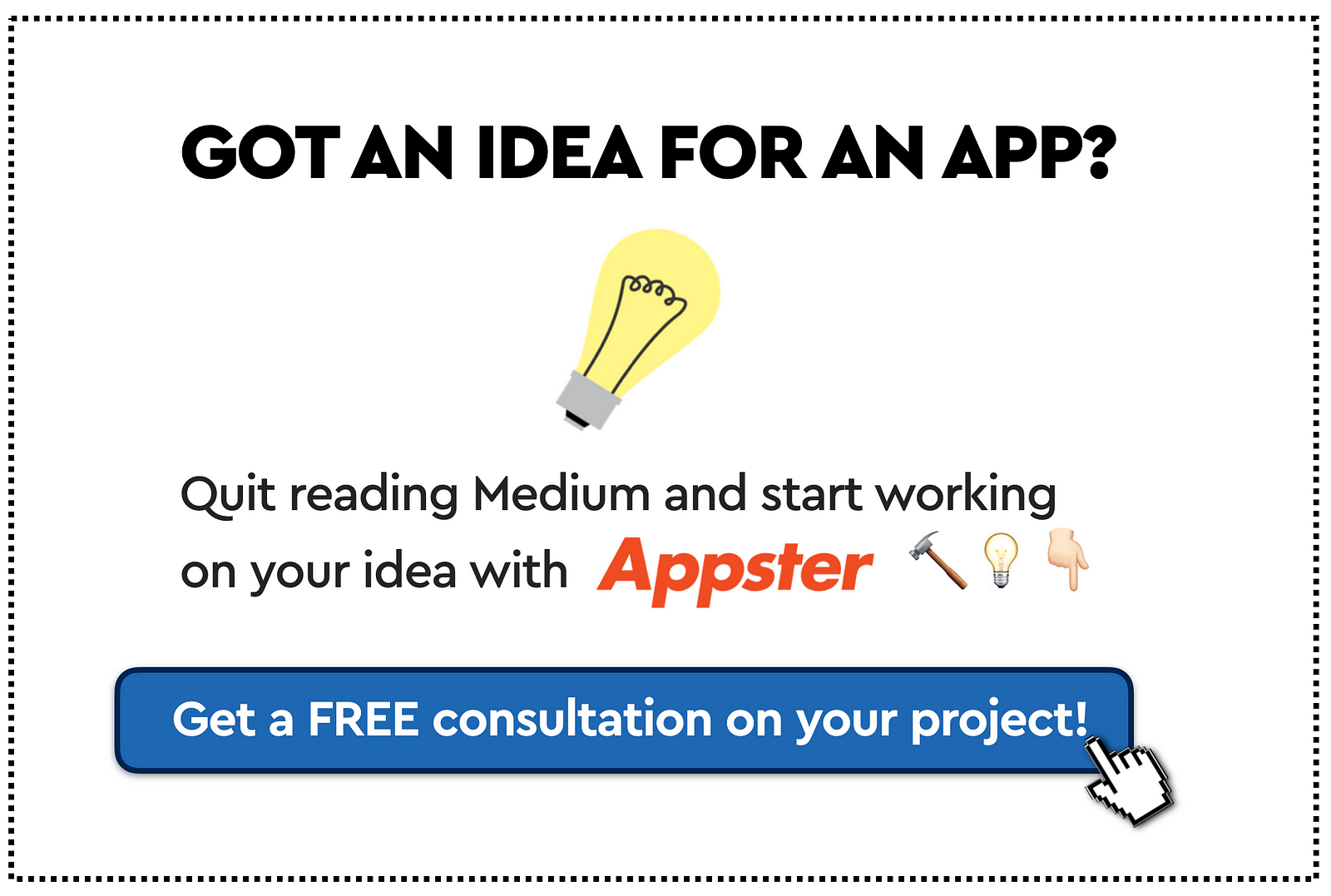7 Ways to Test Your Product Idea & Gather Real-World Feedback (at little-to-no cost)
Save article ToRead Archive Delete · Log in Log out
9 min read · View original · medium.com/swlh
7 Ways to Test Your Product Idea & Gather Real-World Feedback (at little-to-no cost)


Before you can effectively transition from potentially marketable idea to actually profitable product, you must first test your idea by collecting real-world feedback from actual consumers — otherwise, it’s simply impossible to determine with any certainty whether your idea responds to a true monetizable customer pain.
Today I’m going to be sharing with you a number of effective strategies that you can use to test how the market is likely to respond to your idea without actually having to launch a tangible product.
I’m hoping not only will these tactics allow you to gain concrete insight into whether actual customers will view your product as an attractive solution to a pain they need resolved, but they will also cost you little-to-nothing to execute.
Note: before you embark on any of these strategies, make sure you:
- Can present something tangible — a mockup, wireframe, or even a simple sketch — to the people with whom you’ll be sharing your idea (i.e., at this stage your idea can be mostly, but not entirely, words — consumers need some sort of visual, audible, or physical representation in order to connect with your idea);
- Learn how to effectively describe your idea and explain the problem(s) it will solve using simple language (e.g., language that a 6th-grader would understand);
- Spend a significant amount of time thinking about and working on the exact questions to which you want to receive answers (test out your mock questions on others before going “into the field” to make sure it’s fully clear what you’re asking in each case); and
- Detach yourself from your idea in the sense that you’re able to discuss it in a dispassionate and rational way (your goal is not to sell or defend your idea but rather to present it in a neutral fashion and thereby gather objective feedback necessary to tweaking and improving your idea).
Here are 7 free (or nearly free) ways to test the validity of your idea before jumping into the market and launching your product:
1. The $20 Starbucks Test


- Take out $20 from an ATM and visit your nearest Starbucks location.
- Politely walk up to one stranger at a time and calmly explain your situation: “Excuse me, do you have a moment to help me with something? My brother will be quitting his job at the end of the week and investing his life-savings into an idea we have for a start-up company. If I were to buy you a coffee would you be willing to give me your honest thoughts on whether you think the idea would work? That’s it, no catch — just your honest feedback.”
- Objectively pitch your idea to the person. Speak slowly and clearly whilst maintaining eye contact. Be friendly but not overly enthusiastic. Feel free to show him/her whichever visual, auditory, or physical representation you’ve brought with you.
- Ask the person what he/she thinks of the idea. If he/she seems overly supportive (i.e., trying to please you) then ask: “Can you give me three reasons why you think the idea might not work?” Keep him/her focused on the idea rather than the backstory of how you created it. Listen attentively and do not argue in any way.
- Thank the person for his/her time and wish him/her a good day.
- Repeat steps 2–5 over and over until you run out of money. If you feel that you have not collected enough valuable feedback by that point then take out another $20 and start the process over again.
The hope is that the $20 Starbucks Test will allow you to gather a number of previously unrecognized criticisms/objections with which you’ll be able to then fine-tune your future product.
2. The “Knock-On-The-Door” Approach
The above-described Starbucks test is one way of meeting people face-to-face in order to generate real-world feedback on your idea.
Internet entrepreneur and venture capitalist Tony Hsieh recruited his first customers by directly emailing webmasters; he then sold his company for $265 million to Microsoft and founded the ultra successful Zappos.
Noah Kagan, the founder of AppSumo, began using a similar direct contact approach; he too emphasizes the importance of dealing with people in person during the earliest days of your start-up.
Using the power of the Internet is a second method:
- Create a set of well-thought out, easy-to-understand, and clearly articulated questions about your idea (the pain it’s meant to solve, the ways in which it functions as the fix, and so on).
- Upload the questions as an online survey connected to a sign-up link for product launch notifications. Offer potential participants some sort of incentive for taking the survey (e.g., the chance to win an Amazon gift-card).
- If you’re building an enterprise product then use Google Search to find the names and emails of potential customers; if you plan to operate in the consumer space then leverage your network of friends to collect potential participants.
- Locate relevant groups on sites like LinkedIn, Facebook, Quora, and Reddit, and send each of the members a short, personalized, and genuine message about your survey.
- Do not send generic, spammy messages or emails; rather, act like a friend who’s asking for some quick and painless feedback.
If your messages/emails are written properly and sent out in non-spammy ways then some of the recipients might become your future customers, with many of them offering to speak to you via online video chat or in person in order to give you additional feedback on your idea.
3. Polls and Surveys


As a continuation of the previous strategy, consider utilizing the power of online surveys in order to generate real market feedback about your idea.
There are many free and paid survey tools that you can use, including:
- Google Surveys and Facebook Advertising Tools
- Websites like PickFu that allow you to create simple A/B tests and acquire market feedback
- SurveyMonkey, Typeform (my personal favourite), and related sites that let you create free surveys and distribute them manually
Keep the following basic rules in mind when writing and sending out surveys:
- Keep the surveys simple, i.e., use basic language, easy-to-understand questions, and clearly labeled answer options
- Offer participants some kind of incentive or prize (e.g. a discount or a chance to win something)
- Always add links to email sign-ups to ensure that you can directly contact respondents in the future and thereby dig out additional feedback from them.


4. Send out a Test Ad Campaign and Measure the Results
Many advertising platforms offer new clients free credits to start using their services.
Google AdWords, Facebook Ads, LinkedIn Ads, AdRoll, Twitter, etc., all maintain offers for free advertising credits between $50 and $150 for new accounts. Use Google to find the service most attractive to you, sign up for some free credits, and then follow these steps:
- Create a simple landing page presenting a unique value proposition (UVP) and a sign-up link (or even better, a real “pre-order” button that collects actual pre-orders for your future product)
- Add Google Analytics tracking codes to your site and call-to-action (CTA) buttons
- Run campaigns to drive traffic to your site and check the conversion rates
- Follow-Up with people who register using the sign-up link in order to learn more about their specific needs and wants, and why they signed up in the first place


Aside from gathering data that will help you test whether your UVP sells well, the test ad campaign method will also allow you to determine which traffic channels work best for your UVP and where can you get the best return-on-investment (ROI) once you start marketing your actual product.
5. Beta Promotion Sites and Startup Directories
Beta promotion sites like betali.st allow you to distribute your simple, pre-launch site amongst early adopters and then collect their sign-ups to participate in beta testing and customer feedback campaigns.
Most of the submissions are free; with respect to betali.st in particular, there is a paid option that allows you to distribute your site even faster.
Follow these steps to launch your own beta promotion:
- Create a simple landing page presenting a unique value proposition (UVP) and a sign-up link (or even better, a real “pre-order” button that collects actual pre-orders for your future product)
- Add your submissions using this list over at Quora
- Track the results and follow-up with people who respond to your campaign
- Visit websites like Reddit, Hacker News, or specific forums and online communities and ask for feedback. Do not attempt to promote or sell anything; just be humble and ask for some honest opinions from those who are interested in contributing and you’ll get some feedback.


6. Meet-Ups and Events
One of the best ways to get out of the office building and talk to real-world people is to strategically locate customers by focusing on specific meet-ups and events.
An easy method for doing this is to search sites like meetup.com and eventbrite.com for meet-up groups and events relevant to your particular niche. This can be very beneficial as it allows you to find targeted communities of potential users for your future product.
When physically attending a meet-up or event, keep in mind that you’re there to engage: talk to people, ask questions, elicit feedback, and encourage others to be honest/upfront with their opinions. Again, don’t promote yourself in any kind of over-the-top, obvious, or annoying way.
You always get better results by being real with people and asking for friendly feedback rather than aggressively pushing your idea or product.
Bonus tip: Get a bunch of double-sided business cards: one side with your contact details listed and the other with a special sign-up URL to your site. For instance, “Get 20% off on www.yoursite.com/20off”.
7. Earn Face-Time with Successful Entrepreneurs
Leverage your social and professional networks — call in favours, complete free work for others, offer to organize mutual introductions — such that you earn the privilege to meet with some of the most successful people you know (preferably one-on-one, if not then in a small group setting).
If you’re unable to arrange a meeting on your own then politely ask friends and family for introductions.


Successful entrepreneurs are individuals constantly interacting with the market. Even though they might not be your actual customers, you will almost certainly learn a lot and acquire some great feedback from established professionals who have successfully completed the journey on which you’re now starting out.
Thus, you should absolutely put the effort into politely and humbly trying to catch the ear of one or more founders with whom you could discuss your idea.
Remember: entrepreneurs love to help out other entrepreneurs, especially because there is a shared understanding and respect amongst self-driven professionals who recognize the importance of hard work and networking.
If a successful entrepreneur sees potential in your idea then he/she may very well play a major role in helping you ultimately transition from idea to product — which, after all, is the entire point of the strategies outlined in this article!


